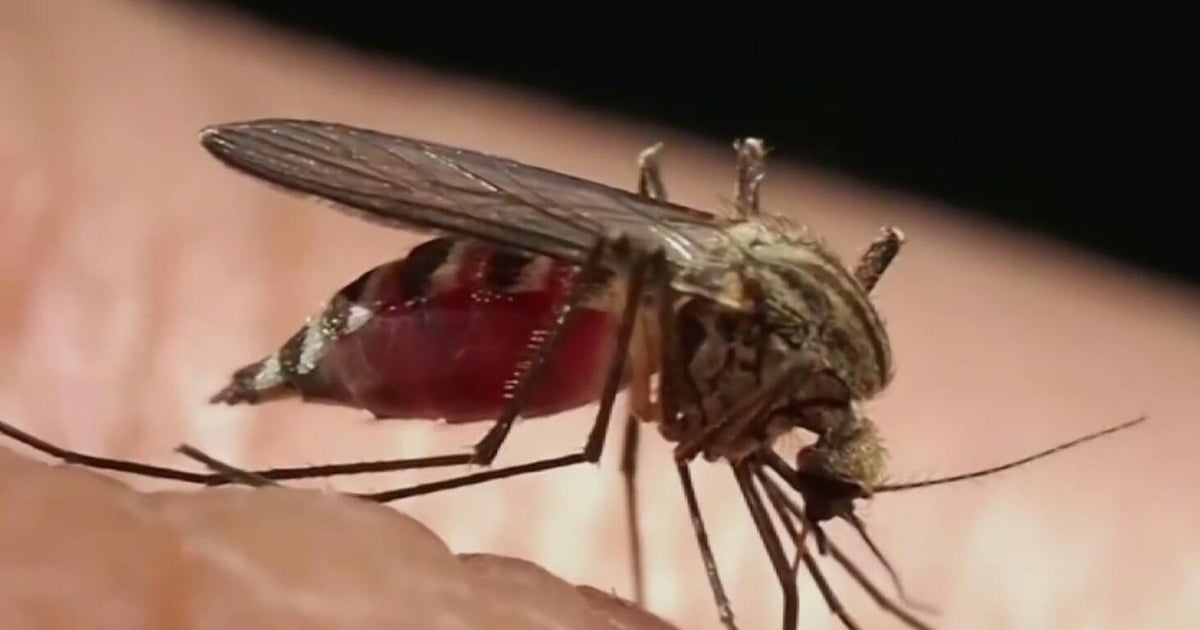Indonesia announces closure of polio outbreak – Global Polio Eradication

Report on the Closure of Indonesia’s Poliovirus Outbreak: A Milestone for Sustainable Development Goal 3
Executive Summary
On 19 November 2025, the World Health Organization (WHO) officially declared the closure of Indonesia’s circulating poliovirus type 2 (cVDPV2) outbreak. This declaration marks a significant achievement in public health and a substantial contribution to the United Nations’ Sustainable Development Goal 3 (SDG 3), which aims to ensure healthy lives and promote well-being for all. The successful response, initiated after the first case was detected in October 2022, was characterized by extensive immunization campaigns, enhanced surveillance, and robust international partnerships, aligning with SDG 17 (Partnerships for the Goals).
Outbreak Response and Contribution to SDG 3: Good Health and Well-being
The national response to the polio outbreak, which affected nine provinces, was a comprehensive effort focused on halting transmission and strengthening the health system to prevent future occurrences, directly addressing SDG Target 3.3 to end the epidemics of communicable diseases.
Immunization Campaign and Coverage Enhancement
A core component of the response was a large-scale vaccination effort to protect vulnerable populations and build herd immunity. Key outcomes include:
- Administration of nearly 60 million additional doses of the novel OPV-2 (nOPV2) vaccine during two nationwide polio campaigns conducted between late 2022 and the third trimester of 2024.
- A significant improvement in routine immunization coverage, with the percentage of children receiving their second dose of inactivated polio vaccine (IPV) increasing from 63% in 2023 to 73% in 2024.
Strategic Innovations in Public Health Delivery
To accelerate immunization coverage and improve healthcare efficiency, the Ministry of Health introduced the hexavalent vaccine in October 2025. This initiative supports SDG Target 3.8 for universal health coverage by:
- Combining DPT-HB-Hib and IPV into a single injection.
- Providing simultaneous protection against six diseases: polio, diphtheria, pertussis, tetanus, hepatitis B, and specific forms of pneumonia and meningitis.
- Reducing the number of required injections, thereby saving time and resources for families and the healthcare system.
Enhanced Surveillance and Disease Detection
Strengthening national surveillance systems was critical for monitoring the outbreak and ensuring its containment, a foundational element for a resilient health system under SDG 3. Indonesia made notable progress in the detection and investigation of Acute Flaccid Paralysis (AFP), improving the quality and sensitivity of case detection and the adequacy of stool specimen collection.
Global Partnerships for the Goals (SDG 17) and Verification
The successful closure of the outbreak was underpinned by effective collaboration between the Indonesian government and international partners, demonstrating the power of SDG 17 in achieving global health targets.
International Collaboration
This achievement was made possible through a coordinated effort involving key stakeholders:
- The Government of Indonesia
- World Health Organization (WHO)
- UNICEF
- United Nations Development Programme (UNDP)
- Clinton Health Access Initiative (CHAI)
- Rotary International
Independent Assessment and Outbreak Closure
In line with global protocols, an independent team conducted three Outbreak Response Assessments (OBRA) in July 2023, December 2024, and June 2025. The assessments confirmed that Indonesia had implemented a high-quality response and that poliovirus transmission had ceased, with the last confirmed case reported on 27 June 2024. Based on these findings, the WHO verified that Indonesia met the criteria for outbreak closure.
Future Commitments to Sustain a Polio-Free Status
The Ministry of Health has reaffirmed its commitment to maintaining a polio-free Indonesia and continuing progress towards SDG 3. The strategy moving forward includes several key pillars:
- Strengthening Routine Immunization: Ensuring all children receive complete, age-appropriate immunizations to prevent future outbreaks of polio and other vaccine-preventable diseases.
- Enhancing Surveillance: Maintaining high-quality AFP and environmental surveillance to rapidly detect any potential re-emergence of the virus.
- Fostering Cross-Sectoral Collaboration: Continuing to work with national and international partners to support public health initiatives.
- Promoting Community Support: Engaging communities to maintain high vaccination demand and awareness.
1. SDGs Addressed in the Article
SDG 3: Good Health and Well-being
This is the primary SDG addressed in the article. The entire text focuses on public health, specifically the successful effort to end a polio outbreak in Indonesia. The article discusses vaccination campaigns, improving immunization coverage, disease surveillance, and the overall goal of protecting children from a vaccine-preventable disease, all of which are central to SDG 3.
- The article details the response to a poliovirus outbreak, a communicable disease, which directly relates to ensuring healthy lives.
- It highlights the administration of “nearly 60 million additional doses of polio vaccine” and the improvement of routine immunization coverage to protect children’s health.
- The introduction of the hexavalent vaccine is mentioned as a way to “accelerate the development of immunity to various diseases” and make the vaccination process more efficient for families.
SDG 17: Partnerships for the Goals
The article explicitly mentions the collaborative effort required to achieve the successful outcome of ending the polio outbreak. This highlights the importance of partnerships between national governments and international organizations.
- The text states, “This achievement is made possible with the collaboration of the Government of Indonesia with WHO, UNICEF, the United Nations Development Programme (UNDP), the Clinton Health Access Initiative (CHAI), and the Rotary International.”
- This collaboration is presented as a key factor in the success of the outbreak response, reinforcing the principle of multi-stakeholder partnerships to achieve sustainable development goals.
2. Specific Targets Identified
Targets under SDG 3: Good Health and Well-being
-
Target 3.3: By 2030, end the epidemics of AIDS, tuberculosis, malaria and neglected tropical diseases and combat hepatitis, water-borne diseases and other communicable diseases.
The article directly addresses this target by describing the successful closure of a polio outbreak, which is a communicable disease. The statement, “Indonesia has officially ended its outbreak of poliovirus type 2,” is a clear achievement related to this target.
-
Target 3.8: Achieve universal health coverage, including financial risk protection, access to quality essential health-care services and access to safe, effective, quality and affordable essential medicines and vaccines for all.
The article discusses efforts to expand access to essential vaccines. The nationwide polio campaigns and the improvement in routine immunization coverage, where the percentage of children receiving their IPV dose rose from 63% to 73%, are concrete steps towards universal health coverage. The introduction of the hexavalent vaccine to “reduce the number of injections children receive, save time and money for families” also aligns with providing more accessible and efficient healthcare services.
-
Target 3.b: Support the research and development of vaccines and medicines for the communicable and non-communicable diseases… provide access to affordable essential medicines and vaccines…
The article mentions the use of a “novel OPV-2 (nOPV2) vaccine” in the nationwide polio campaigns. This points to the adoption and deployment of new vaccine technologies to effectively combat specific strains of a disease, which is a core component of this target.
Targets under SDG 17: Partnerships for the Goals
-
Target 17.16: Enhance the global partnership for sustainable development, complemented by multi-stakeholder partnerships that mobilize and share knowledge, expertise, technology and financial resources…
The success of the polio outbreak response is explicitly attributed to a multi-stakeholder partnership. The article lists the collaborating entities: “the Government of Indonesia with WHO, UNICEF, the United Nations Development Programme (UNDP), the Clinton Health Access Initiative (CHAI), and the Rotary International.” This collaboration, which brought together governmental and international expertise and resources, is a direct example of Target 17.16 in action.
3. Indicators Mentioned or Implied
Indicators for SDG 3 Targets
- Indicator for Target 3.3: The number of new cases of a communicable disease. The article provides clear data points for this indicator: “Since June 2024, no poliovirus has been detected in children or the environment,” and “The last confirmed cVDPV2 case was in South Papua on 27 June 2024.” The declaration of the “outbreak closure” is the ultimate measure of progress.
- Indicator for Target 3.8: Coverage of essential health services (vaccination coverage). The article provides specific quantitative data: “the percentage of children receiving their second dose of inactivated polio vaccine (IPV) rising from 63% (1.9 million children) in 2023 to 73% (3.2 million children) in 2024.” Another indicator is the total number of vaccine doses administered, mentioned as “nearly 60 million additional doses of polio vaccine.”
- Indicator for Target 3.b: The adoption and use of new vaccines. The article mentions the deployment of the “novel OPV-2 (nOPV2) vaccine” and the introduction of the “hexavalent vaccine,” which serve as indicators of the country’s capacity to utilize new and improved medical technologies.
Indicators for SDG 17 Target
- Indicator for Target 17.16: The existence and effectiveness of multi-stakeholder partnerships. The article implies the effectiveness of the partnership by linking it directly to the successful outcome: “This achievement is made possible with the collaboration of the Government of Indonesia with WHO, UNICEF…” The successful closure of the polio outbreak serves as a qualitative indicator of the partnership’s success.
4. Summary Table of SDGs, Targets, and Indicators
| SDGs | Targets | Indicators |
|---|---|---|
| SDG 3: Good Health and Well-being | 3.3: End epidemics of communicable diseases. |
|
| 3.8: Achieve universal health coverage, including access to essential vaccines. |
|
|
| 3.b: Support the development and provision of vaccines. |
|
|
| SDG 17: Partnerships for the Goals | 17.16: Enhance the global partnership for sustainable development through multi-stakeholder partnerships. |
|
Source: polioeradication.org
What is Your Reaction?
 Like
0
Like
0
 Dislike
0
Dislike
0
 Love
0
Love
0
 Funny
0
Funny
0
 Angry
0
Angry
0
 Sad
0
Sad
0
 Wow
0
Wow
0



















































.jpg.webp?itok=0ZsAnae9#)

























